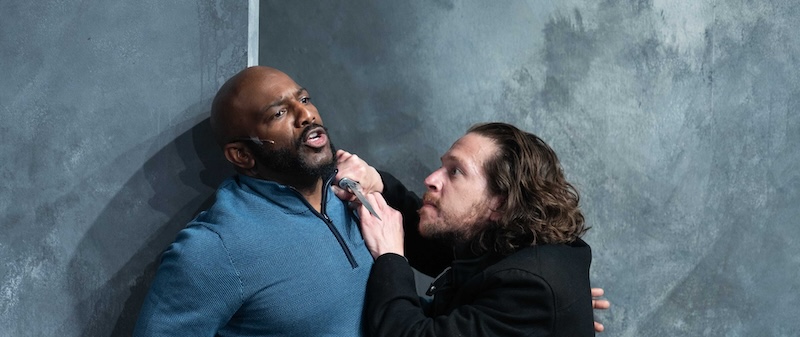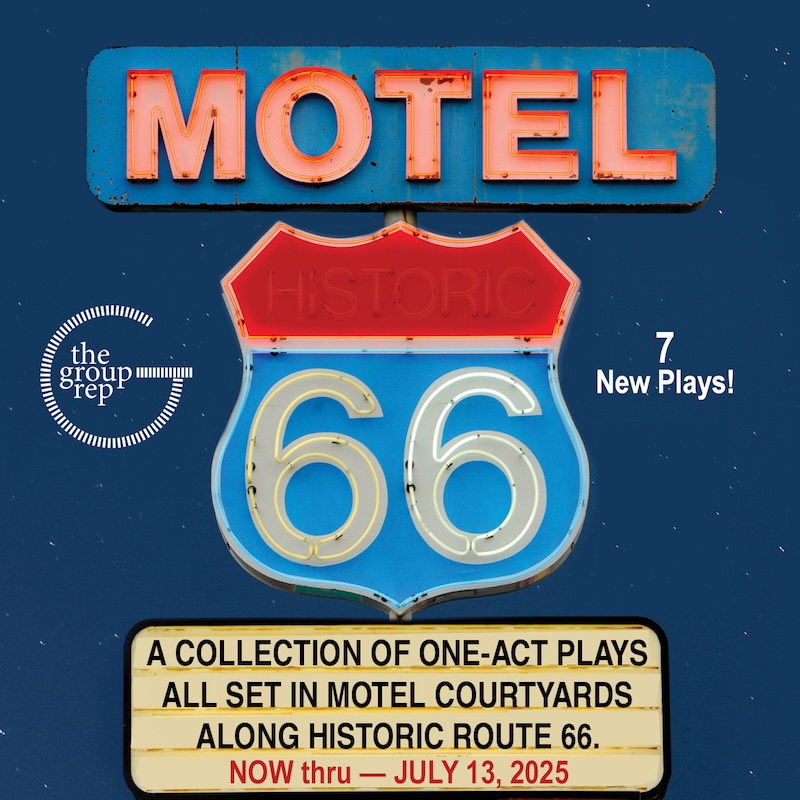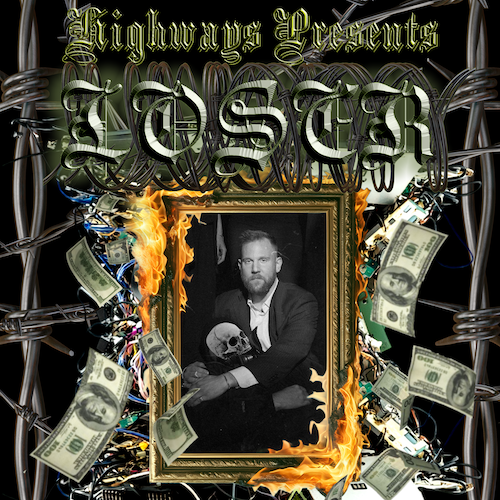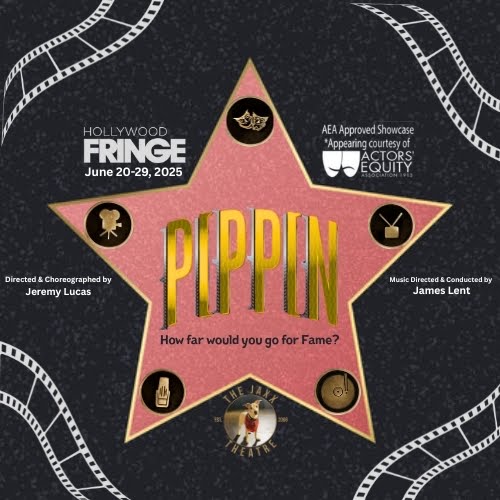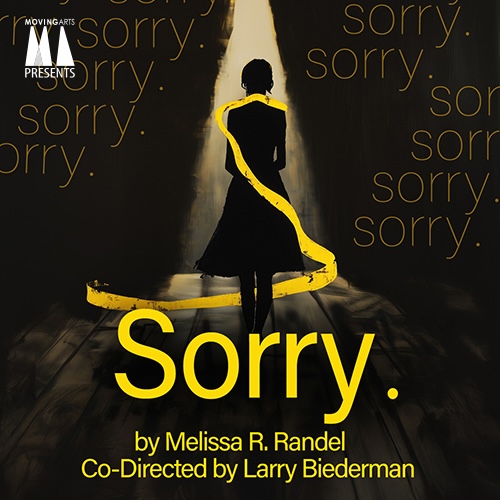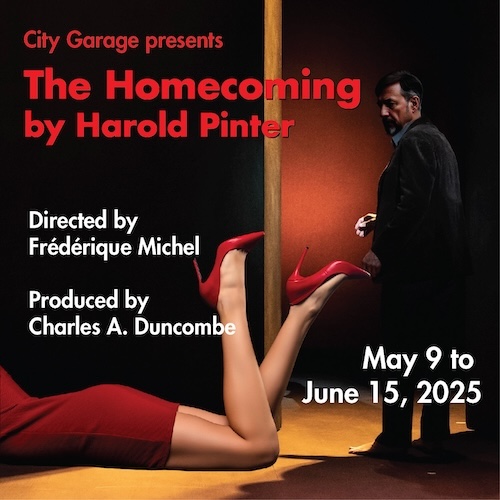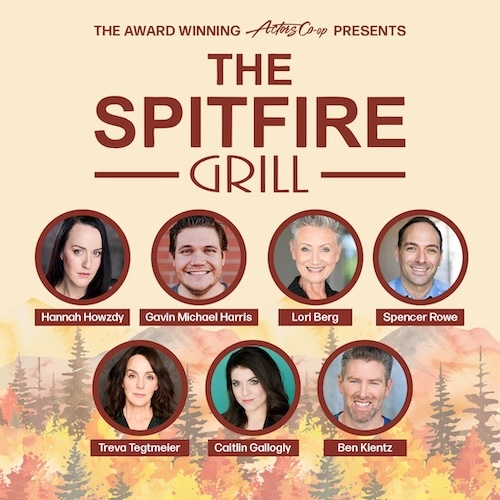Corey Jones and Raphael Goldstein (Photo by Zach Mendez)
Reviewed by Philip Brandes
Ensemble Theatre Company at the New Vic Theater
Through February 23.
RECOMMENDED
Sporting 21st century sensibilities and a Scandi noir-inspired design language, Ensemble Theatre Company’s updated take on Hamlet at Santa Barbara’s New Vic Theater reimagines William Shakespeare’s sprawling revenge tragedy as an intimate contemporary dysfunctional family trainwreck.
Performed in modern dress on a spare, abstract set by a nimble eight-member ensemble, it’s still “Hamlet” nonetheless. But while the central characters and broad contours of Shakespeare’s plot remain (spoiler alert: something is very rotten in the state of Denmark and everybody dies), director Margaret Shigeko Starbuck has some shrewd surprises in store.
In the title role, Will Block underplays the traditional brooding know-it-all in favor of a bespectacled college dweeb with an uncanny knack for being in the right place and time (think Hamlet as Radar from “M*A*S*H”). Newly returned from school and mourning both the untimely death of his Kingly father and the close-following marriage of his widowed mother, Queen Gertrude (Paige Lindsey White), to throne-usurping Uncle Claudius (Corey Jones), the melancholy Prince initially finds himself in way over his head amid a thicket of palace intrigue.
Through a combination of circumstance, eavesdropping, and a visitation from the beans-spilling ghost of his murdered Dad, Hamlet pieces together his uncle’s crime and learns to navigate the interwoven politics of family and state as he plots his revenge. Block’s performance traces this coming-of-age journey and its associated anxiety and uncertainties with notable clarity and confidence.
From the outset, Starbuck’s staging homes in on the play’s central tension between emotional authenticity and performative artifice — in the family’s introductory scene, Claudius turns his welcoming embrace of Gertrude and Hamlet into a photo op.
Turning the tables, performance becomes Hamlet’s weapon of choice as he feigns madness to provoke his enemies and divert suspicion while he gathers evidence against them. But is he also holding a mirror up to his own mental instability? Truth and illusion become increasingly hard to distinguish as the play dives self-reflexively into its own theatrical experience with Hamlet’s “Mousetrap” gambit, in which he enlists a pretentious actor (versatile Rafael Goldstein, who elsewhere doubles as Laertes) to stage a re-enactment of his father’s murder with which to catch the conscience of newly-crowned Claudius.
Director Starbuck gleefully extends this hall of mirrors to include the audience with fourth wall-shattering moments. Block’s Hamlet addresses his “To be or not to be” soliloquy directly to us from one of the theater aisles, even as Ophelia (Ana Nicolle Chavez) sits onstage and Claudius and Polonius (Matt Foyer) presumably eavesdrop from behind one of the background flats in Yuki Izumihara’s multi-layered set design. So who is Hamlet really performing the speech for?
Within this extended play-within-a-play-within-a-play format, Starbuck’s staging strategically tempers tragedy with whimsical comic relief. During another passage delivered while munching on a bag of cheese puffs, Hamlet pauses to toss a few into the audience, as if feeding animals at the zoo. To perform Hamlet’s Mousetrap, Goldstein’s hired gun thespian uses cardboard shadow puppets on a vintage 1960’s era Vu-Graph projector. For Ophelia’s mad scene, Chavez carries out a boom box to accompany her fine singing voice — the conflicted emotions evoked by this incongruous spectacle make this one of the production’s most effectively complex scenes.
For sheer comic finesse, however, the crown goes to Matt Foyer’s consistently pitch-perfect bloviating as the meddlesome courtier, Polonius. Starbuck’s staging wisely gives Foyer’s hilarity free reign, leaning in when Ophelia and Laertes, having heard his pompous lecturing so many times before, recite it in unison even as he’s delivering it. As an added bonus, Foyer also brings much-needed levity to the role of the wisecracking grave digger in the cemetery scene buildup to the play’s corpse-strewn finale.
Amid excellent technical production values some budget-friendly concessions are apparent, particularly in the slimmed-down cast of characters. The Mousetrap is performed by the solo actor without his usual troupe of players; Guildenstern’s co-conspirator Rosencrantz is nowhere to be found, leaving Sammy Linkowski to shoulder both roles’ obsequious betrayal duties; and Jono Eiland’s stalwart Horatio has to close out the evening with no invading Fortinbras to restore order.
As with any resetting of Shakespeare’s plays, the fundamental challenge here is in smoothly reconciling the anachronistic original verse with modern speech. The production mostly succeeds in this respect, though not without some disconnects when actors cling too tightly to the formal meter. This occurs most often in the early going, with distracting pauses at line endings that interrupt the natural flow of speech. Things settle down as the scenes become more action-driven. In Claudius’s confessional soliloquy while praying, Jones delivers a master class in bringing Shakespeare’s verse to life.
Notwithstanding the show’s contemporary updates and liberties taken with the plot, the dialog is in fact entirely Shakespeare’s — but with a twist. Hamlet revivals typically rely on one of three officially authenticated versions published in the early 1600’s — usually the 1623 First Folio mothership. However, the three texts differ in significant ways, not only in length but in the addition, modification, and omission of lines that can change the tone and even their meaning.
For this new adaptation, director Starbuck has meticulously drawn from all three versions, and the result is a production that freshens the familiar with some subtle but surprising departures that can help engage even jaded Hamleteers.
The adaptive choices that will likely prove most welcome to Shakespeare newbies and veterans alike is the substantial surgical trimming of a potential five-hour simmer before reaching the final boiling point.
New Vic Theater, 33 Victoria St., Santa Barbara. Opens Sat., Feb. 8; Wed.-Thurs., 7:30 pm, Fri.-Sat., 8 pm, Sun., 2 pm; thru Feb. 23. https://www.etcsb.org. Running time: 3 hours with intermission.


